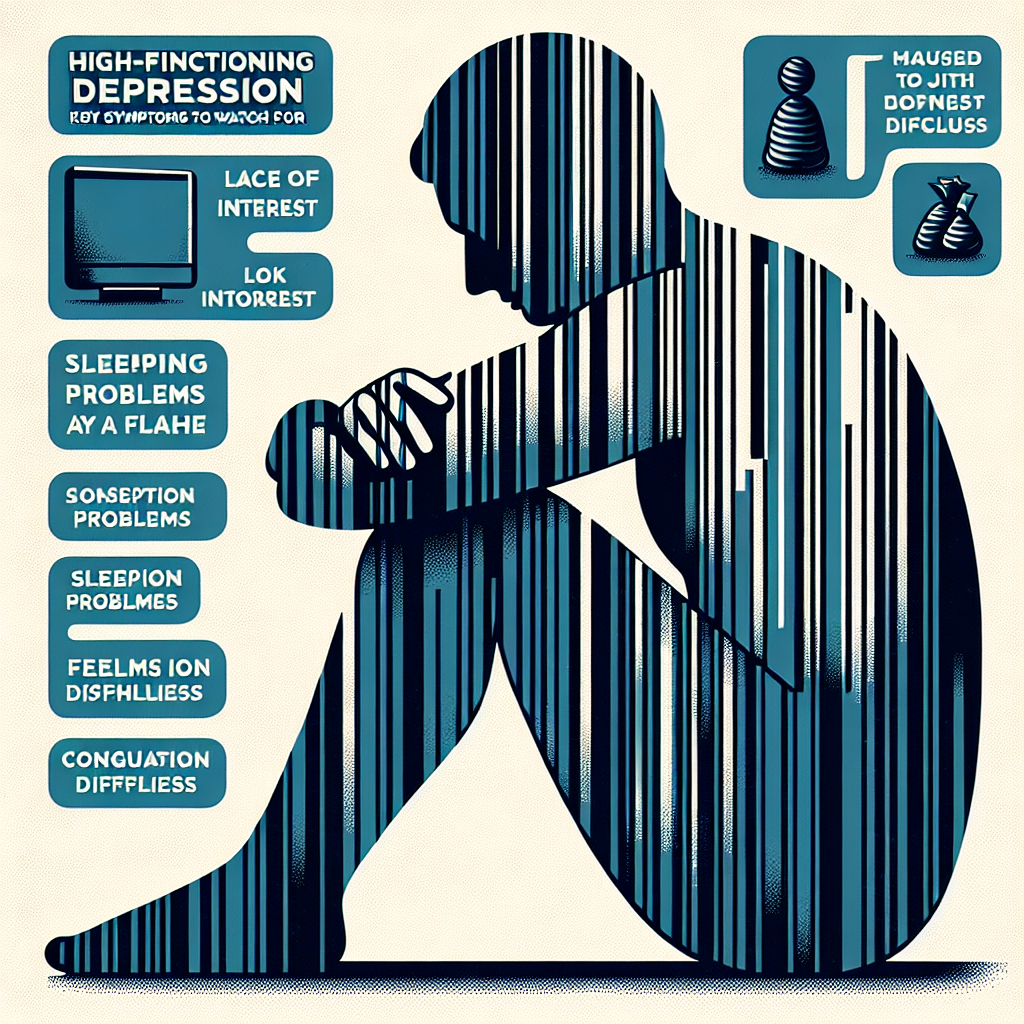
High-Functioning Depression Demystified: Key Symptoms to Watch For
Introduction
In a fast-paced world where productivity and achievement are often celebrated above all, mental health issues like depression can sometimes slip under the radar. Among these, high-functioning depression (HFD) emerges as a particularly stealthy adversary. You might know someone who seems to be thriving in their career, maintaining relationships, and appearing put-together while quietly battling deep emotional turmoil. Understanding the nuances of high-functioning depression is crucial for both individuals experiencing it and those around them. This article, High-Functioning Depression Demystified: Key Symptoms to Watch For, aims to shed light on this often overlooked condition and provide valuable insights.
What is High-Functioning Depression?
High-functioning depression, often referred to clinically as Persistent Depressive Disorder (PDD), is a chronic form of depression characterized by relatively mild symptoms that persist for an extended period. Those who experience HFD can maintain their daily routine and responsibilities, which can obscure the extent of their internal struggles. Although they might seem to cope well on the outside, this doesn’t lessen the weight of their emotional burdens.
Key Characteristics of High-Functioning Depression
To fully grasp HFD, let’s delve into its particular traits, distinguishing it from other forms of depression.
Chronicity: High-functioning depression is persistent, with symptoms lasting for two years or more. Individuals frequently notice a sense of hopelessness that lingers in the background.
Functional Masking: Those with HFD often excel in their jobs or daily activities. Their ability to function provides a deceptive appearance of wellness, making it difficult for others to recognize their struggles.
Subtle Symptoms: Unlike major depressive disorder, HFD symptoms can be subtle and may include fatigue, irritability, and low self-esteem rather than pronounced sadness or despair.
- Resilience and Success: Many individuals with HFD are high achievers. They often strive for excellence, yet feel inadequate despite their accomplishments.
Understanding these characteristics forms the basis for recognizing the key symptoms to watch for in individuals experiencing high-functioning depression.
Key Symptoms to Watch For
1. Persistent Low Mood
A hallmark of high-functioning depression is a consistent low mood. Unlike the intense sadness experienced in major depression, individuals with HFD may simply feel "off" for extended periods.
Case Study: Sarah’s Story
Sarah is a marketing executive who leads a high-performing team. Despite her career success, she often feels a sense of sadness that lingers for weeks. While she meets all her deadlines and maintains her social life, many close to her notice she frequently downsizes her achievements, attributing her success to luck rather than hard work.
Analysis: Sarah’s story illustrates how persistent low mood can be masked by outward success, making it one of the key symptoms of high-functioning depression that often goes unnoticed.
2. Fatigue and Low Energy
Somatic fatigue and low energy are common complaints among high-functioning individuals. This fatigue can be both physical and mental, contributing to feelings of overwhelm.
Statistics Table:
| Symptom | Percentage of Cases in HFD |
|---|---|
| Fatigue | 80% |
| Emotional Lability | 65% |
| Difficulties in Concentration | 70% |
3. A Sense of Inadequacy
Individuals with high-functioning depression often struggle with feelings of inadequacy. They may feel they are never doing enough, regardless of their actual achievements.
4. Difficulty in Making Decisions
Indecision can also be a symptom of HFD. This is often tied to feelings of worthlessness or the fear of failure.
5. Social Withdrawal
Even though many with HFD appear socially active, they might retreat from deeper connections, feeling a lack of emotional resources to engage meaningfully.
6. Impressive Coping Mechanisms
While it may seem paradoxical, individuals with high-functioning depression often develop impressive coping skills to get by in life. However, these can also perpetuate the cycle of emotional suppression — making it harder to seek help.
7. Heightened Anxiety Levels
Many individuals with high-functioning depression also deal with anxiety. This duality creates a mental cocktail that can further complicate their emotional landscape.
Case Study: Jack’s Journey
Jack, a 34-year-old software developer, is also a part-time musician. He presents himself as confident and successful but experiences severe anxiety when performing. Often feeling like a fraud, Jack harbors a fear that people will uncover his internal struggles, leading him to avoid social gatherings, particularly those that require him to showcase his talent.
Analysis: Jack’s ideal of success clashes with his internal turmoil. His dual experience of HFD and anxiety underscores the complexity of the condition, highlighting the necessity of awareness regarding its symptoms.
Recognizing the Signs: A Call to Action
Understanding the symptoms of high-functioning depression is a crucial step toward fostering a more supportive environment. If you or someone you know is exhibiting these signs, it’s important to recognize that help is available.
Seeking Help
While high-functioning depression allows individuals to maintain their lifestyle, it’s still crucial to address the underlying issues. Here are actionable insights to consider:
- Professional Support: Encourage individuals experiencing symptoms to seek professional counseling or therapy.
- Open Conversations: Start conversations about mental health to reduce stigmas around discussing depression.
- Mindfulness Practices: Encouraging mindfulness and self-care can help individuals reconnect with their emotions.
- Build Support Networks: Establishing a network of friends and family to offer emotional support can be vital in healing.
Conclusion
High-Functioning Depression Demystified: Key Symptoms to Watch For enlightens us about a condition that can easily be missed in today’s hustle culture. By understanding the key symptoms, we can support those around us who may be silently struggling.
Recognizing that success and happiness can coexist with emotional battles is the first step toward fostering empathy and compassion. If you resonate with any of the symptoms discussed, know that seeking help is not a sign of weakness; it’s a powerful step toward reclaiming your life. Embracing emotional honesty leads to stronger relationships and a healthier outlook.
FAQs
1. Can high-functioning depression occur without noticeable symptoms?
Yes, individuals with high-functioning depression may exhibit minimal discernible symptoms, making it easy for themselves and others to overlook their struggles.
2. Is high-functioning depression curable?
While high-functioning depression can be challenging, it is treatable with therapy, medication, and self-care practices.
3. What are the long-term effects of untreated high-functioning depression?
Untreated high-functioning depression can lead to more severe depression, anxiety disorders, and strained relationships.
4. How can someone support a friend with high-functioning depression?
Encourage open conversations about feelings, provide emotional support, and suggest professional resources without judgment.
5. Are there support groups for people with high-functioning depression?
Yes, many organizations and mental health services offer support groups for individuals dealing with various forms of depression, including high-functioning depression.
By being informed and aware, we can break the stigma surrounding mental health and empower ourselves and others to seek the support they need. Together, let’s begin the journey toward emotional wellness today.

















